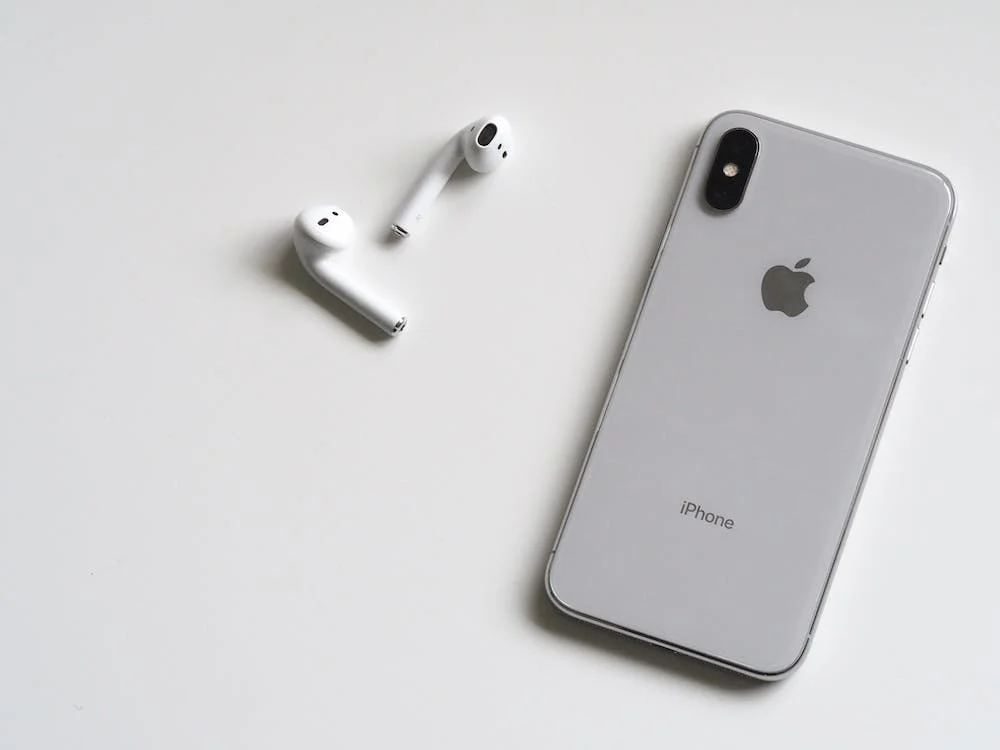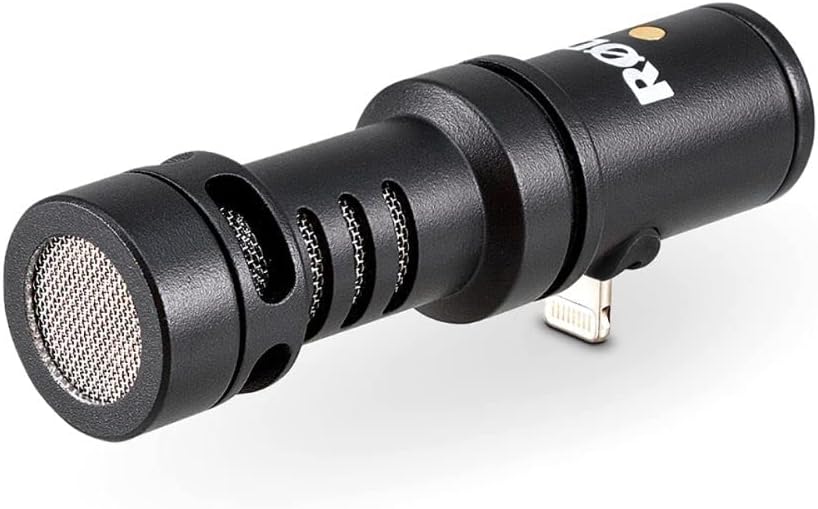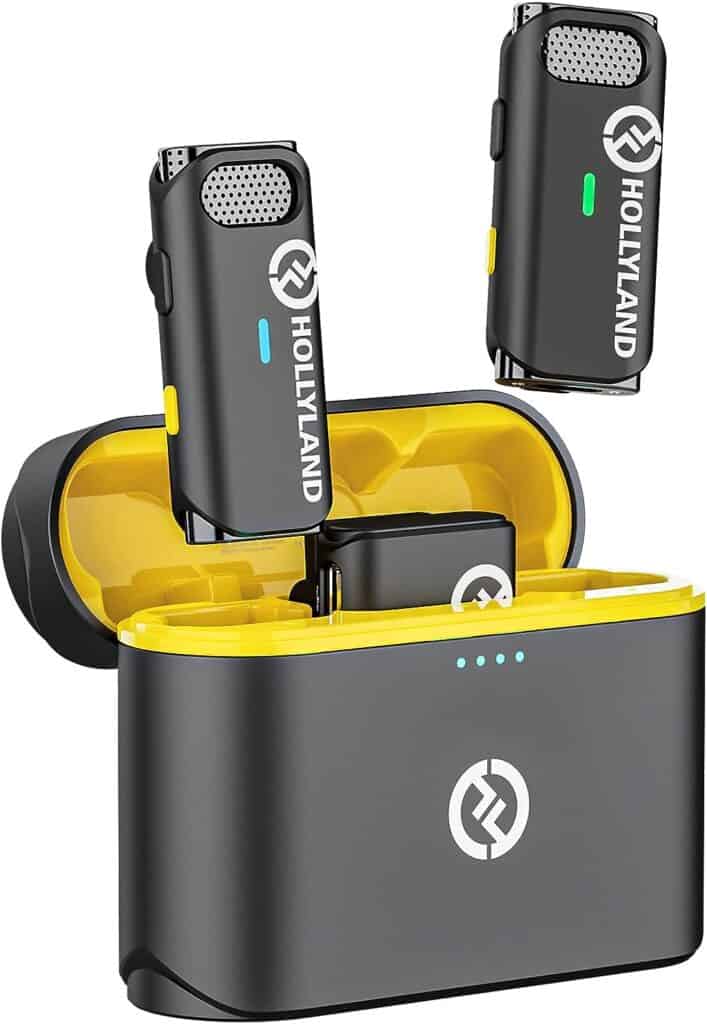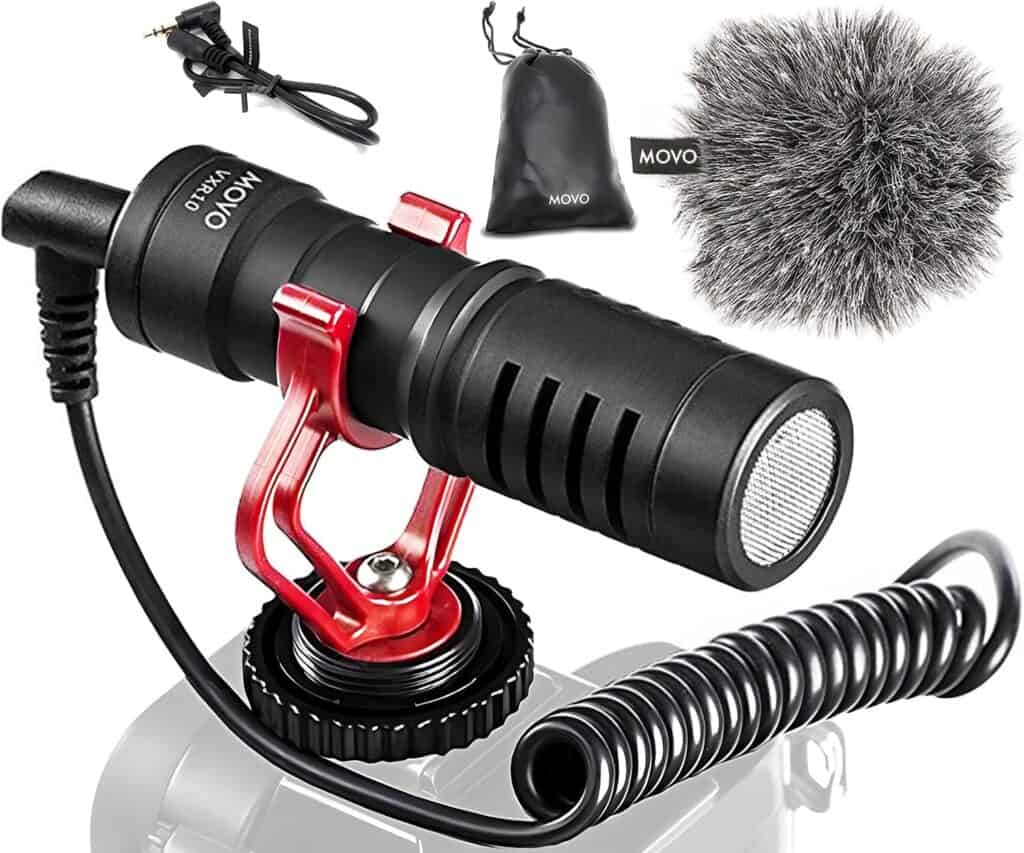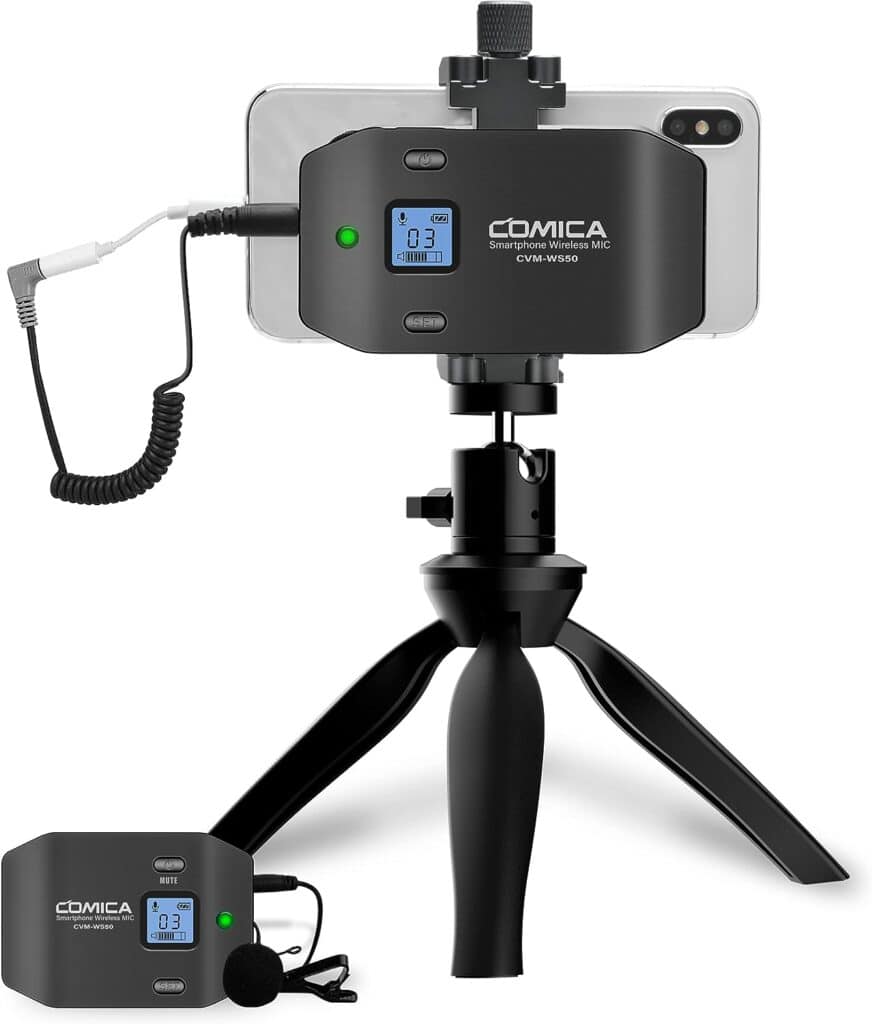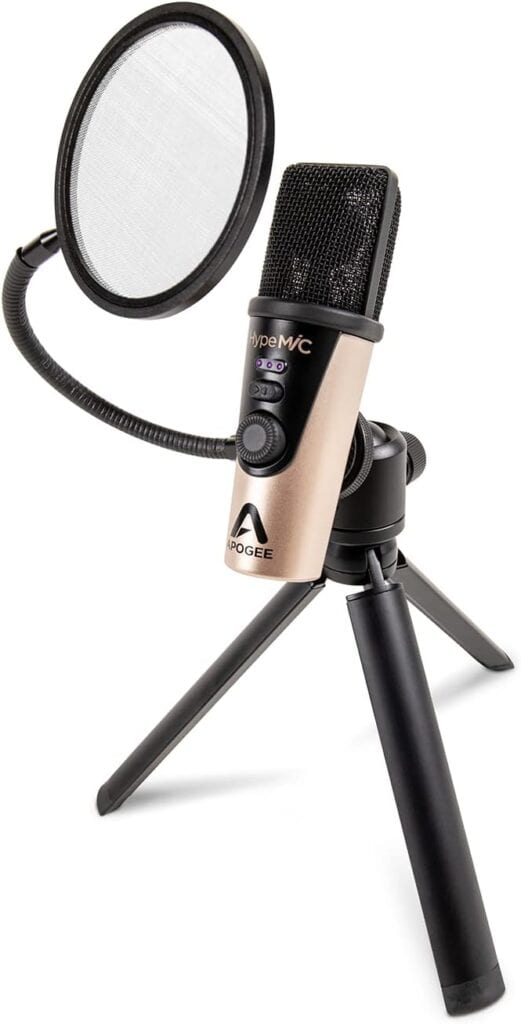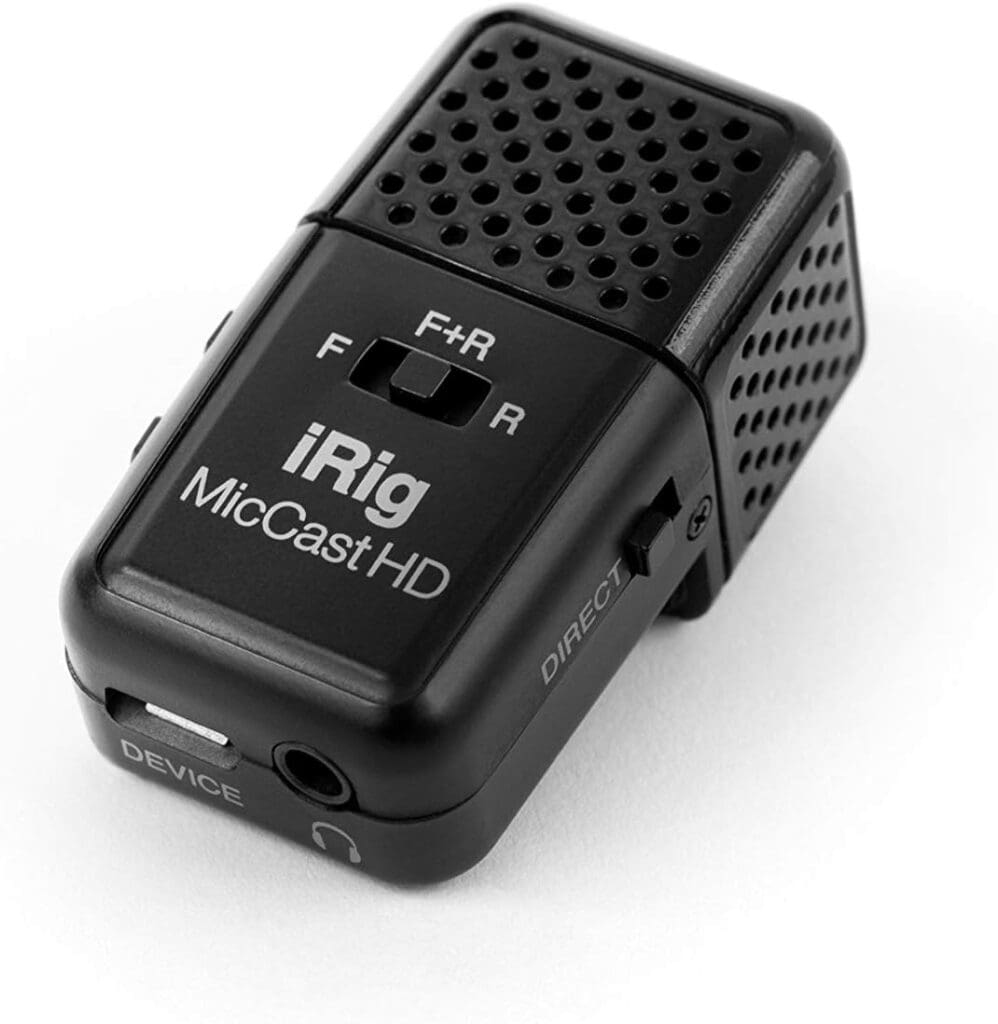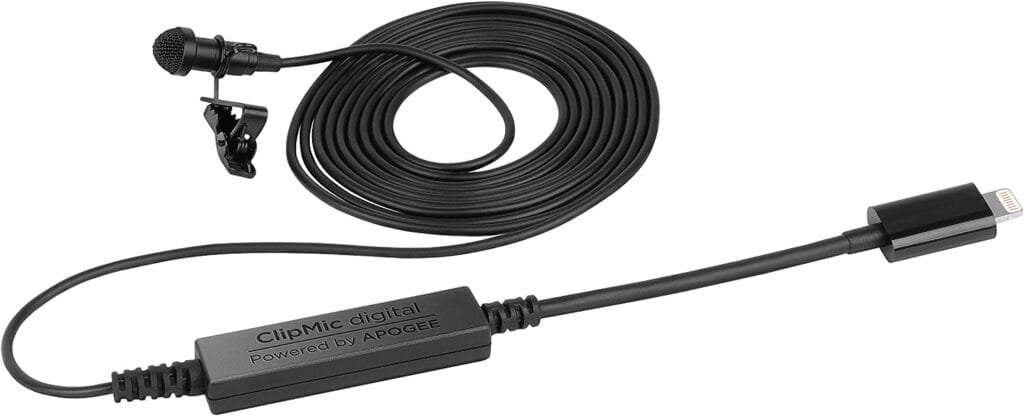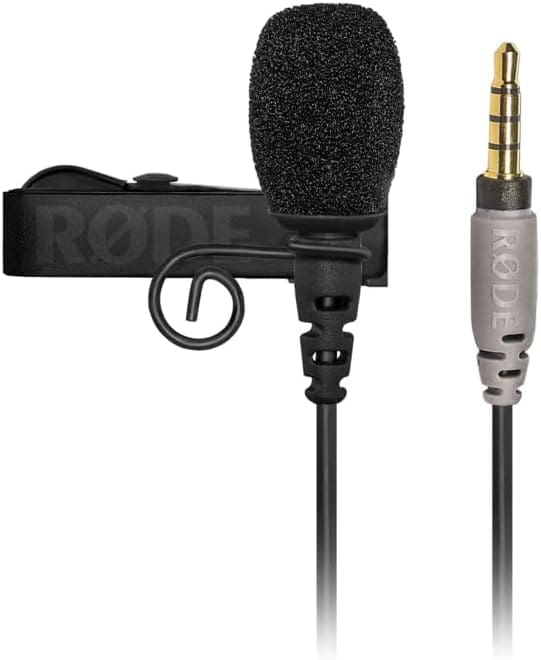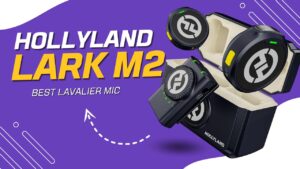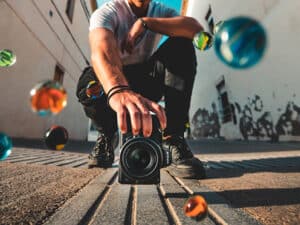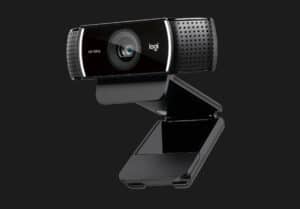If you prefer to record your podcast episodes on your iPhone or iOS device, you can level up your show by adding a microphone that connects right to your smartphone. These mics are simple, small, and affordable, but manage to capture great audio. In this article, we tell you everything you need to know about podcast microphones for iPhones and iOS devices.
Castos is a participant in the Amazon Services LLC Associates Program. We may earn commissions from your purchases on Amazon.com, though at no cost to you.
Tip
If you’re looking for general podcast gear, make sure to check out our podcast equipment guide. We offer solutions for podcasters of any budget.
Why Use Podcast Microphones for iPhones?
Using an iPhone microphone for podcasting can be a practical choice for several reasons:
- Portability: iPhones are compact and easy to carry, allowing podcasters to record content on the go, whether it’s in a studio, at an event, or while traveling. This portability can be especially useful for capturing spontaneous or location-specific content.
- Cost-Effective: iPhones typically come with built-in microphones, and using them for podcasting can be cost-effective, especially for beginners or those on a tight budget. External microphones like the RODE Lavalier GO can provide improved audio quality without breaking the bank.
- Convenience: iPhones offer a user-friendly interface and a range of podcasting apps that make recording, editing, and publishing podcasts straightforward. You don’t need additional equipment or technical expertise to get started.
- Minimal Setup: Using an iPhone microphone eliminates the need for complex audio setups, mixers, and additional cables. This simplicity can save time and effort for podcasters.
- Accessibility: Many people already own iPhones, so using the device they are familiar with can be more accessible and convenient than investing in separate recording equipment.
- Video Podcast: Since you already have your iPhone out, you might as well record a video podcast to create an additional content asset.
While dedicated podcasting microphones and setups can offer superior audio quality, using podcast microphones for iPhones can be a viable and convenient option for podcasters, especially those looking for a simple and cost-effective way to start their podcasting journey.
The 12 Best Podcast Microphones for iPhones
If you’re looking for podcast microphones for iPhones, you’re in the right place. Here’s a list of our favorites. All of these mics will connect to your iPhone using the Lightning connector or headphone jack.
1. Shure MV 88
The Shure MV88 is a compact and versatile microphone designed with podcasters in mind, offering a premium audio recording experience in a portable package. This microphone excels in capturing clear and high-quality audio, making it an ideal choice for podcasters seeking professional-sounding content.
One of the standout features of the Shure MV88 is its adjustable stereo microphone capsule, which allows for flexible recording options. Whether you’re conducting interviews, recording solo episodes, or capturing ambient soundscapes, this microphone can adapt to your needs. The MV88 is compatible with iOS devices, making it perfect for on-the-go podcasters who want a lightweight and easy-to-use solution.
Another advantage of the Shure MV88 is its user-friendly app, which provides precise control over microphone settings and offers preset modes tailored for various recording situations. This microphone also boasts superior build quality, ensuring durability for frequent use.
2. Zoom IQ 7
The Zoom iQ7 is a versatile microphone attachment designed to elevate the podcasting experience for content creators using iOS devices. This microphone is a fantastic choice for podcasters seeking high-quality audio recording in a portable package.
The iQ7 features a mid-side stereo microphone setup, allowing for adjustable stereo width, making it adaptable to various recording scenarios. This flexibility enables podcasters to capture rich, immersive soundscapes or focus on individual voices with precision.
What makes the Zoom iQ7 especially suitable for podcasters is its compatibility with iOS devices through the Lightning connector. This seamless integration ensures a hassle-free setup without the need for additional adapters. Additionally, it provides phantom power for condenser microphones, expanding your microphone options.
The microphone also includes a headphone jack for real-time monitoring, crucial for ensuring audio quality during recording. Its sturdy build ensures durability and longevity.
3. Rode VideoMic Me-L
The Rode VideoMic Me-L is a compact and highly portable microphone designed to enhance the audio quality of your podcast recordings, particularly for content creators using iOS devices like iPhones and iPads. This microphone is an excellent choice for podcasters.
First and foremost, the VideoMic Me-L offers exceptional audio capture in a small form factor. Its directional cardioid pickup pattern effectively reduces background noise, ensuring that your podcast audio is crisp and clear. This feature is crucial for recording in various environments, especially when recording on location.
Furthermore, the VideoMic Me-L is designed to plug directly into the Lightning port of iOS devices, making it incredibly convenient and hassle-free to use. You don’t need additional adapters or power sources, simplifying your setup for podcasting on the go.
The microphone also comes with a headphone jack for real-time audio monitoring, allowing podcasters to ensure their audio quality during recording. Its robust build quality ensures durability and longevity.
4. Hollyland Lark M1
The Hollyland Lark M1 is an innovative and compact wireless microphone system designed to cater to the needs of podcasters and content creators.
The Lark M1 is a wireless microphone system that includes both a transmitter and a receiver, providing freedom of movement during podcast recordings. This flexibility allows podcasters to maintain a dynamic and engaging presence while recording, without being tethered to their recording equipment.
One of the standout features of the Lark M1 is its impressive range of up to 100 meters, ensuring a stable and interference-free audio connection even in larger recording spaces or outdoor settings. This range is especially valuable for podcasters who desire flexibility in their recording locations.
Moreover, the microphone system offers excellent sound quality with a frequency response tailored for voice recordings, resulting in clear and professional audio for podcasts. The Lark M1 also boasts a reliable battery life, ensuring extended recording sessions without interruptions.
5. Movo VXR10
The Movo VXR10 is a compact and affordable shotgun microphone that has gained popularity among podcasters for its exceptional performance and versatility.
The VXR10 features a supercardioid pickup pattern, which effectively captures audio from the front while minimizing sound from the sides and rear. This directional sensitivity is ideal for podcasters, as it helps isolate the speaker’s voice and reduces background noise, resulting in clear and professional-sounding recordings.
The microphone is designed to mount directly on your camera or smartphone, making it incredibly convenient for podcasters who record video podcasts or prefer a mobile setup. It includes a shock mount to reduce handling noise and a furry windscreen to minimize wind noise during outdoor recordings.
Furthermore, the Movo VXR10 is powered by the device it’s connected to, eliminating the need for batteries or additional power sources.
6. Comica Audio CVM-WS50
The Comica Audio CVM-WS50 is a wireless microphone system tailored to the needs of podcasters and content creators. This microphone system stands out as an excellent choice for podcasters due to its versatility, audio quality, and user-friendly features.
The CVM-WS50 comprises a transmitter and receiver, providing podcasters with the freedom to move around without being tethered to their recording equipment. Its 6-channel selection and 194-foot (60-meter) range ensure reliable and interference-free audio capture, even in larger recording spaces.
One of the notable features of the CVM-WS50 is its dual microphone options: a lavalier microphone and a handheld microphone. This flexibility allows podcasters to choose the best microphone for their recording style, whether they prefer a clip-on lapel mic for hands-free operation or a handheld mic for a more dynamic presentation.
Additionally, the microphone system offers real-time audio monitoring through headphones, enabling podcasters to monitor their audio quality during recording.
7. Blue Raspberry
The Blue Raspberry is a premium-quality podcast microphone for iPhones that’s known for its versatility and exceptional audio performance. It boasts a studio-grade condenser capsule that delivers crystal-clear audio with a frequency response of 20Hz to 20kHz. This wide frequency range captures every nuance of your voice, ensuring professional-grade sound quality for your podcasts.
What sets the Blue Raspberry apart for iPhone users is its seamless compatibility. It connects directly to iPhones through the Lightning port, eliminating the need for additional adapters or converters. This makes it incredibly user-friendly, allowing podcasters to set up quickly and start recording without any hassle.
The microphone also includes a built-in headphone jack for real-time monitoring, ensuring that podcasters can hear exactly what their audience will hear and make necessary adjustments during recording.
Additionally, the Blue Raspberry’s compact and portable design makes it perfect for podcasters on the go, whether recording in a studio or conducting interviews in the field.
8. Apogee MiC 96k
The Apogee MiC 96k is a top-tier podcast microphone for iPhones that’s renowned for its remarkable audio quality and compatibility with iPhones.
The professional-grade cardioid condenser capsule captures audio with astounding clarity and precision. Its extended frequency response from 20Hz to 20kHz ensures that your podcast recordings capture every nuance, from deep lows to crisp highs.
What sets the MiC 96k apart for iPhone users is its direct connectivity. It utilizes a Lightning connector, seamlessly plugging into your iPhone without the need for adapters or external power sources. This straightforward setup makes it incredibly convenient for podcasters who want to hit record quickly.
Moreover, the MiC 96k offers 24-bit/96kHz analog-to-digital conversion, resulting in pristine audio quality that rivals professional studio setups. Its compact and portable design makes it perfect for on-the-go podcasting.
9. IK iRig Mic Cast HD
The IK iRig Mic Cast HD is a stellar microphone, particularly notable for its seamless iPhone connectivity. This microphone stands out for its impressive audio quality and versatility. It boasts a high-definition 24-bit audio resolution and a cardioid pickup pattern, ensuring crystal-clear sound while effectively reducing background noise.
What sets it apart is its direct compatibility with iPhones, making it a fantastic choice for on-the-go content creators, podcasters, and journalists who rely on their iPhones for recording. Its compact design and adjustable stand allow for easy positioning, and the headphone output facilitates real-time monitoring.
Moreover, the included software bundle adds significant value, offering essential tools for audio processing and editing on your iPhone. Whether you’re recording interviews, vlogging, or podcasting, the IK iRig Mic Cast HD offers exceptional quality and convenience for iPhone users, making it an excellent choice for mobile content creation.
10. Apogee ClipMic Digital
The Apogee ClipMic Digital is an exceptional microphone renowned for its top-notch audio quality. This lavalier microphone is designed for on-the-go recording, interviews, and mobile content creation, making it an excellent choice for iPhone users.
Its standout feature is its direct digital connection to iPhones via the Lightning connector, bypassing the device’s internal analog-to-digital converters. This ensures pristine audio capture with a 24-bit/96kHz resolution, resulting in professional-grade recordings.
The discreet and versatile clip-on design allows for hands-free operation, making it ideal for interviews, presentations, and video content. The included Apogee MetaRecorder app further enhances its usability by providing convenient recording and editing capabilities right on your iPhone.
11. RODE SmartLav+
The RODE SmartLav+ is an excellent choice for iPhone users for several reasons. First and foremost, it is specifically designed to work seamlessly with iPhones, making it a convenient and reliable audio recording solution for content creators, journalists, and anyone looking to improve their iPhone’s audio quality.
One key advantage is its compatibility. The SmartLav+ connects directly to the iPhone’s headphone jack or Lightning port, eliminating the need for additional adapters or complicated setups. This plug-and-play functionality ensures a hassle-free experience.
Furthermore, the SmartLav+ delivers exceptional audio quality for its size and price point. Its high-quality omnidirectional condenser capsule captures clear and natural sound, whether you’re recording interviews, podcasts, vlogs, or other content.
RODE also provides a dedicated app, RODE Rec, for iOS devices, which allows users to easily adjust recording settings and monitor audio levels in real-time.
12. RODE Lavalier GO
The RODE Lavalier GO is a high-quality, compact lapel microphone designed for podcasters using iPhones. This microphone offers exceptional audio capture in a small, discreet package, making it an excellent choice for iPhone podcasters.
Its key features include a professional-grade condenser capsule for clear and crisp sound recording, a robust Kevlar-reinforced cable for durability, and a secure, easy-to-use clip for convenient attachment to clothing. The Lavalier GO connects directly to the iPhone’s headphone jack, making it a hassle-free plug-and-play solution without the need for additional adapters or power sources.
What makes it especially appealing to iPhone podcasters is its compatibility and seamless integration with iOS devices. You can simply connect it and start recording using your favorite podcasting apps. The Lavalier GO delivers broadcast-quality audio, ensuring that your podcasts sound professional and engaging, making it an excellent tool for content creators looking to improve their mobile recording setup.
How to Get the Best Audio Quality from Your iPhone
To achieve the best audio quality from your iPhone, you can follow these steps:
1. Use a Quality Microphone
Invest in an external microphone compatible with your iPhone. High-quality podcast microphones for iPhones, such as lavalier or shotgun microphones, can significantly improve audio clarity. Make sure it’s compatible with your device, whether through the headphone jack or a Lightning/USB-C port adapter.
2. Control Background Noise
Find a quiet environment for recording. Background noise can reduce audio quality, so select a location with minimal distractions or use acoustic treatment to dampen echoes and reverberations.
3. Adjust Settings
Go to your iPhone’s settings and tap on “Sound & Haptics” or “Audio & Video” settings to configure your microphone. Adjust input gain or sensitivity to capture audio at an appropriate volume without distortion. You may have to play around with this feature until you find the setting that works for your voice and recording environment.
4. Use Airplane Mode
Enable Airplane Mode to turn off wireless signals, reducing the chances of interference during recording. This will improve audio quality and prevent you from being interrupted by incoming calls or text messages during your recording.
5. Use a Windscreen or Pop Filter
If you’re recording outdoors or in a windy environment, consider using a windscreen or pop filter to reduce wind noise and plosives (popping sounds when pronouncing “p” and “b” sounds). Check out our list of the best pop filters to find one that’s right for you.
6. Hold the iPhone Steadily
Ensure your iPhone is held steady during recording to prevent handling noise and changes in volume as you move it around. Using a tripod or stabilizer can help maintain stability. Even simply leaning your phone against something while you speak is better than holding it in your hands.
7. Monitor Audio
Use headphones to monitor the audio in real-time. This allows you to catch any issues and make adjustments during recording.
8. Record in a High-Quality Format
Go to your iPhone’s settings and choose the highest quality audio format available, such as 48 kHz or 24-bit. This ensures your recordings have the best possible resolution.
9. Edit Post-Recording
After recording, use audio editing apps like GarageBand or Adobe Audition to fine-tune your audio, remove background noise, and enhance clarity. It’s okay to have an amateur or “on-location” sound, but you’ll want to get rid of anything that’s particularly distracting.
10. Consider Third-Party Recording Apps
Some third-party apps offer advanced audio recording and editing features that may provide better control and quality compared to the default voice recorder app.
11. Experiment and Test
Before your main recording session, do some test recordings to adjust settings and ensure everything sounds optimal. Whenever you record in a new environment, it’s important to record a few minutes of test audio to identify background noise or other problems that might sneak into your recording.
Podcast Microphones for iPhones FAQs
Here are the most common questions people ask about podcast microphones for iPhones.
Can you use an external mic with an iPhone?
Yes, you can use an external microphone with an iPhone. To do this, you’ll need an adapter or cable that connects the microphone’s output (usually a USB or 3.5mm jack) to the iPhone’s input (typically the Lightning or USB-C port). Ensure the microphone is compatible with iOS devices.
How should I use an iPhone as a USB microphone?
To use your iPhone as a USB microphone, you’ll require a USB-to-Lightning or USB-C adapter. Connect the microphone to the adapter, then plug the adapter into your iPhone. Go to your iPhone’s audio settings and select the external microphone as your input source. Now, your iPhone functions as a high-quality USB microphone.
Is the native iPhone mic good for podcasting?
The native iPhone microphone can be suitable for podcasting in quiet environments, but it may not capture the best audio quality in noisier or controlled studio conditions. For professional podcasting, consider using an external microphone for improved sound clarity and noise reduction.
How do I use an external microphone with my iPhone?
To use an external microphone with your iPhone, connect it using the appropriate adapter, then adjust your iPhone’s audio input settings to recognize the external mic. Most recording apps, such as GarageBand or third-party options, will detect the external microphone automatically.
What microphones work with iPhones?
Several microphones work well with iPhones, including USB microphones like the Blue Yeti, Rode NT-USB Mini, and Shure MV88 iOS microphone. Additionally, lavalier microphones with Lightning connectors, like the Rode SmartLav+, offer versatility for mobile podcasting.
How do I use my iPhone as a USB microphone?
To use your iPhone as a USB microphone, connect it to your computer with a USB-to-Lightning or USB-C cable. Go to your computer’s audio settings and select your iPhone as the input device. Apps like GarageBand or third-party software can then capture audio directly from your iPhone for various recording and communication purposes.
Do You Use a Podcast Microphone for iPhone?
If you record your podcast on an iPhone, how do you capture audio? In the comments, let us know which podcast microphones for iPhones you use!
